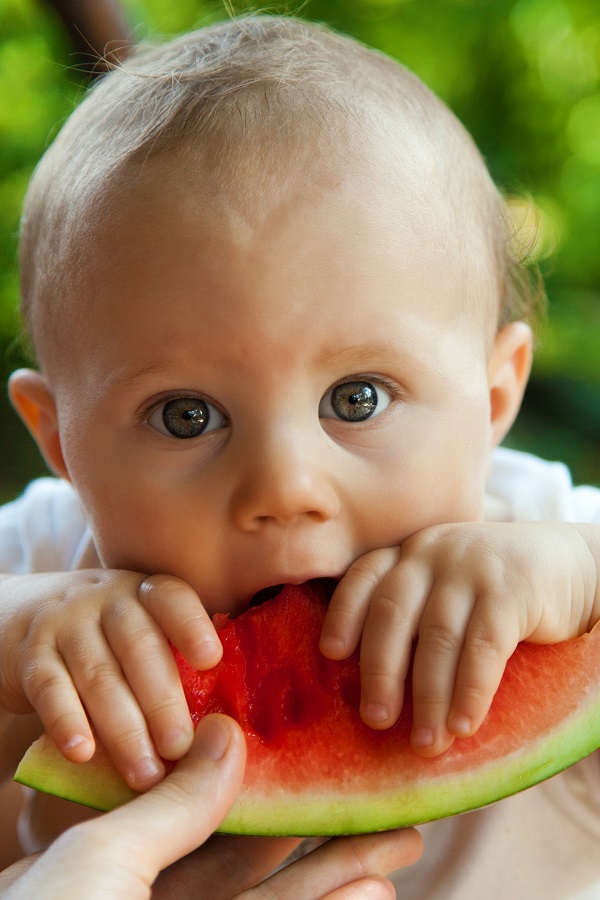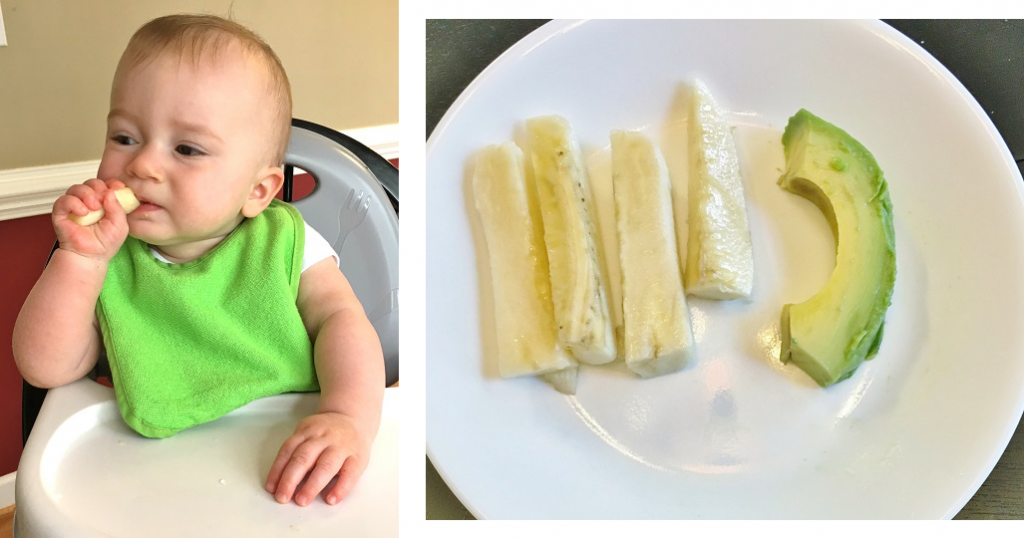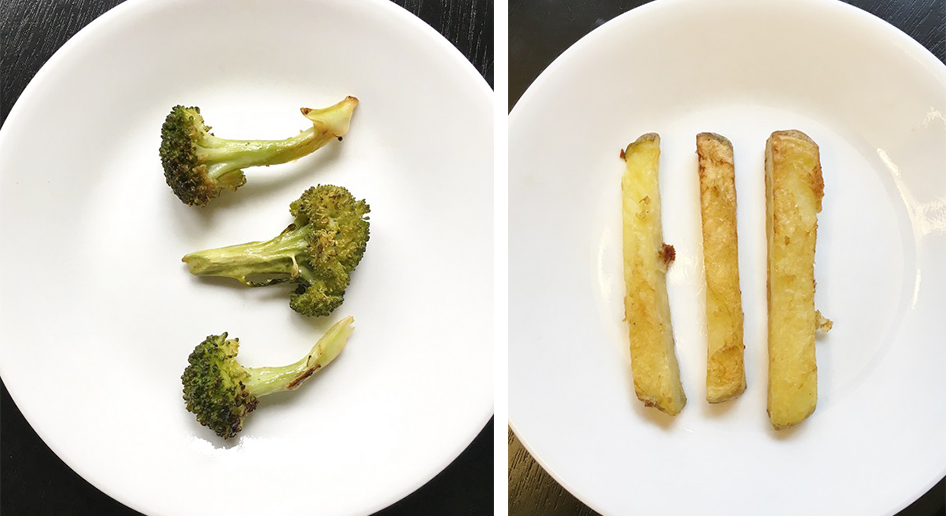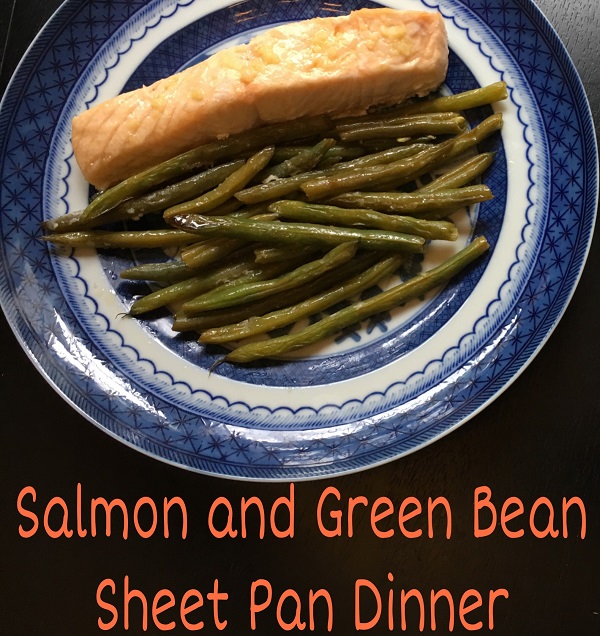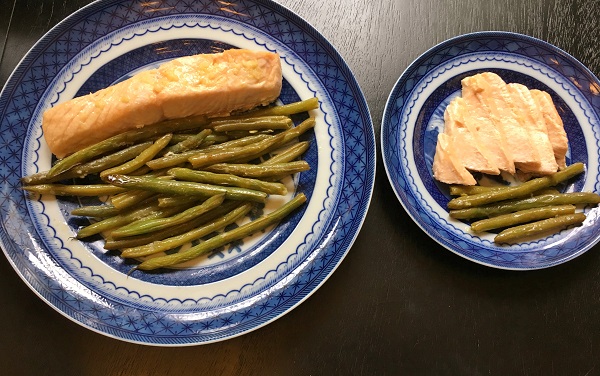If you have recently had a baby you’ve likely heard of baby led weaning (BLW). The concept has been around for centuries, but it has become much more popular in the last few years. Baby led weaning is one way to start solids. Basically, it means that baby is allowed to self-feed appropriate foods when they are developmentally ready. Meaning, no purees, and no spoon feeding from you!
The term baby led weaning was coined by Gill Rapley and Tracey Murkett in their book Baby Led Weaning: The Essential Guide to Introducing Solid Foods. They are from the UK where “weaning” means “adding complementary foods.” One of the selling points about this approach is that it honors and supports baby’s self-regulation of food. We are all born being very in tune with when we are hungry and when we are full. As we get older, we can learn to ignore these hunger and fullness cues, either by how we were fed as babies and kids (i.e. the clean plate club), by eating hyper palatable foods (i.e. processed foods) or by learning to turn to food when bored, sad, happy, etc.
In BLW, the parent provides the food and the baby is in control of exactly what and how much they eat. The baby is also encouraged to join in at family mealtimes (to learn how to eat), and is never hurried or forced to eat food.
Want to reduce the likelihood of picky eating? Try baby led weaning! #saslife Click To TweetWhen is baby ready for solids?
Around 6 months or when you see the following signs:
- Shows interest in your food at meal times by leaning or reaching for it
- Putting toys to his/her mouth
- Grasping items with good hand control
- Can sit up unaided
- Has head and neck control
- Has lost the tongue-thrust reflex, and does not push food out of his/her mouth but is willing and able to swallow.
If you see all of these signs, and your provider agrees, it’s time for baby to start solids!
At 6 months, babies use their whole hand to pick something up. Therefore, with the BLW approach, the foods given are in “graspable shapes” that typically are about the size of your pinkie. That way it’s long enough so they can bite off what sticks out of their palm. This is why spears or “fingers” of very soft, whole foods work perfectly such as a ripe avocado, banana, cooked sweet potato, or butternut squash. Usually by about 8 or 9 months they can pick up smaller pieces of cut up foods.
Proponents of BLW state that some of the benefits include:
- Improved feeding skills
- Fewer weight problems later in life (thanks to supporting baby’s self-regulation of food)
- Reduced likelihood of being a picky eater
Sounds great right! Well, the biggest worries most parents have about BLW are typically choking risk and low intake. A recent study published in Pediatrics – the official journal of the American Academy of Pediatrics- showed that babies using the BLW approach were no more likely to choke than babies on purees or milk. At 6 months, breastmilk or formula is still the MAIN source of nutrition, so even if they don’t actually swallow very much of the solid food in the beginning, that’s o.k.
Gagging versus Choking
It’s very important that you know the difference between gagging and choking. It’s really common for babies to gag and choking is very different from gagging.
- Gagging or coughing is a normal reflex and safety mechanism that pushes food that hasn’t been fully chewed or mashed forward so that it can be chewed some more or spit out. Baby’s eyes may water, she may cough, make gagging sounds, or look scared, but you can see she is working around the food in her mouth. As long as she is just gagging, let her work it out and keep a calm face- she will be looking at you to determine how to react!
- Choking is when an object becomes stuck in the throat or windpipe, causing a blockage of airflow. When babies are eating reclined, they are at greater risk for choking, so they should always be sitting up straight! Don’t feed them in their stroller, carrier or car seat at this age! It is rare that a baby will have a choking episode IF safe feeding practices are in place.
Is BLW right for my baby?
Of course there are some babies that BLW is just not appropriate for such as babies with:
- low muscle tone.
- developmental delays.
- possibly those with cleft palate issues or other health conditions that require special feeding considerations.
- if premature then they may just need to wait longer until they are developmentally ready (adjusted age).
If you are unsure, talk to your provider first or enlist the assistance of a feeding therapist who can be super helpful!
SO, if you decide to do BLW, you want to make sure you are doing it safely:
- Strap baby into their own high chair sitting up straight, never reclined, and never in your lap-you need to see baby’s face when introducing foods to know how they are doing!
- NEVER leave baby alone when eating, even for a second! DON’T give them food, then walk away to do the dishes, or something else. You need to be right there!
- Let them self-feed, DO NOT put any food into their mouths. It’s super tempting to try to help them, but this can increase their risk of choking (watch out for older siblings trying to “help” feed baby too).
- Test the temperature. Lukewarm is good- if the food was microwaved look out for hot spots.
- Test the texture. Make sure you can mash the food between your fingers or between your lips, if not, cook it longer.
- Offer foods that are in the form of a finger so baby can pick them up and bite off the end.
- ONLY offer appropriate foods. Soft and mashable, not hard or round foods which are choking hazards. No highly processed foods, no sugar, and minimal salt- real, whole foods!
- Some babies will pocket foods in their cheeks, which of course can be a choking hazard if put down to play or nap after the meal. Make a game out of them opening their mouth so you can check at the end of the meal. Don’t make it stressful though, you want happy meal times!
Perfect first foods for BLW:
- Avocado- ripe and sliced
- Banana- very ripe and soft, sliced into “fingers”
- Sweet Potato- sliced into sticks or fingers and roasted until very soft
- Butternut Squash- sliced into sticks or fingers and roasted until very soft
- Slow cooked chicken thighs - give thin, moist strands like pulled chicken
And of course, always talk to your provider about individual concerns and questions, every baby is different.
Salmon and Green Bean Sheet Pan Dinner
This is a great family dish that baby can easily share. If baby is brand new to eating, you may want to steam or parboil the green beans a little so they are extra tender after being roasted. Baby can share flakes of salmon and tender green beans. Serve with roasted potatoes or potato fingers for everyone to enjoy. The rest of the family can add salt as desired to their portions.
Ingredients
4-5 (6 oz) salmon filets
12-16 ounces green beans, cleaned and trimmed (keep at least 3 inches long so baby can grab it)
2 tablespoons lemon juice
2 cloves garlic, minced
2 tablespoons cold butter, cubed, divided
Directions
- Position a rack in the center of the oven and preheat the oven to 400ºF. Line a baking sheet with foil and spray or rub with olive oil.
- Place salmon on baking sheet and position green beans all around salmon filets.
- In a saucepan over medium heat, combine the lemon juice and minced garlic, allow the lemon juice to reduce to 1 tablespoon. Add in 1 tablespoon of butter, remove pan from heat and swirl so the butter starts to melt. Place back on the heat for a few seconds, remove and continue to swirl until butter completely melts. Repeat with second tablespoon of butter. When butter is completely melted, remove sauce from stove.
- Pour sauce over each salmon filet and green beans, tossing green beans gently.
- Bake until salmon is done and green beans are tender, about 12 minutes.
Click here for a printer-friendly version of this recipe.
Click here for a printer-friendly version of this blog post.
